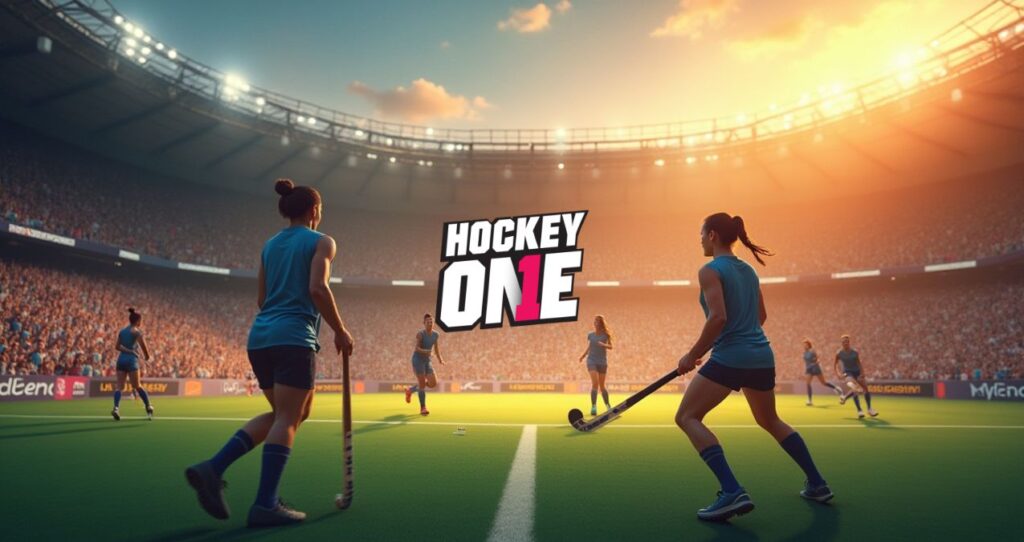From Reset to Revolution: The Rise of Hockey One League
July 24, 2025
Field Hockey, a fast-paced team sport played with sticks and a small ball, has long held a place in Australia’s sporting culture. Known for its speed, precision, and tactical depth, the game rewards sharp passing, set plays, and full-field movement.
Internationally, Australia has been a dominant force. The Kookaburras (men’s team) and Hockeyroos (women’s team) have topped world rankings, won Olympic and World Cup medals, and built reputations as two of the most consistent teams in global hockey.
At home, though, the domestic game faced a different reality. Competitions were fragmented, match coverage was limited, and despite strong grassroots participation, the sport struggled to connect with broader audiences. There wasn’t a national league that could build momentum or unify the sport under a single, season-long identity.
That began to change in 2019, when Hockey One League was introduced not just as a new league, but as a reset. A chance to bring structure, visibility, and renewed purpose to hockey in Australia.
Designing a League for the Modern Fan
When Hockey One League launched, it didn’t just change the format, it reimagined the experience. The old Australian Hockey League had run for decades in a short, carnival-style format. It left little space for sustained fan engagement.
Hockey One introduced a full home-and-away season, giving the sport rhythm, rivalry, and relevance. Seven new clubs were launched with bold identities, and for the first time, men’s and women’s teams competed under a single club banner. Equity wasn’t a theme, it was the model.
Loosely inspired by the Big Bash, the league was built around a clear idea, making the format easy to follow. Weekly double-headers, consistent matchdays, and clean team branding gave it a professional feel. On the pitch, rule changes like the field goal conversion added pace and unpredictability.
The first season showed promise:
- 271 goals across 48 games
- 2.5M+ website impressions
- 14,300+ ticket and membership sales
- A Grand Final TV audience of 61,594
- $670,000 in sponsorship revenue
For a debut, it wasn’t just a launch, it was a foundation.
A Shift Fans Could Feel
With structure came stories. For the first time in years, fans could follow their teams from week to week. Rivalries were formed. Players got the opportunity to become more than names, they represented place, pride, and personality.
Off the field, the league leaned into presence. Behind-the-scenes clips, game-day rituals, and player content made teams feel close, not distant.
Unified branding tied it all together. Gender inclusion wasn’t highlighted, it was standard.
Hockey One League didn’t just offer matches. It gave fans something to follow and something to belong to.
Opening the Game: Hockey One’s Broadcast Journey
From gated streams to global screens, Hockey One has steadily redefined how hockey is shared and who gets to see it.
2019–2021: A Professional Start, But Behind a Paywall
Matches aired on Kayo Sports, with Grand Finals broadcast on Fox Sports. Production standards rose, but access remained limited to paying subscribers.
2022: Season-Long Access at Home
For the first time, fans could follow the entire season through Foxtel and Kayo, giving the league consistent national coverage, though still behind a paywall.
2023: Going Global, Going Free
A broadcast deal with Spring Media extended the league’s reach to over 400 million households worldwide. In Australia, streaming moved to 7plus, making matches freely available, and viewership surged.
2024: A Moment for Women’s Sport
Locally, the 7plus partnership continued to grow. Internationally, women’s matches were streamed globally on the All Women’s Sports Network (AWSN), reaching 65 countries and over 2 billion viewers, a milestone moment for both Hockey One League and women’s sport worldwide.
From paywalls to prime time, Hockey One League didn’t just grow its reach, it changed the way the sport is seen.
Growth Backed by Belief
As visibility rose, so did belief from both sponsors and institutions.
In the first two seasons, the Hockey One League was backed by the Sultana Bran as its naming rights partner.
In 2023, Jamie Dwyer Hockey (JDH) came on as naming rights sponsor. In 2024, Liberty took over the title partnership. Both reflected confidence in the league’s values: equity, performance, and potential.
That same year, the Hockey One League opened Expressions of Interest for a new license. With multiple proposals received, the league is now formalising its eighth license, expected to go to a second Victorian Club.
This isn’t expansion for its own sake. Its growth is rooted in inclusion, infrastructure, and intent.
Where It Stands Now
Across four completed seasons, Hockey One League has become one of the most modern and inclusive leagues in Australian sport.
It introduced structure where there was none, identity where there was fragmentation, and a sense of belonging where tradition once stood alone.
With expansion underway, new audiences tuning in, and strong institutional support, Hockey One League is no longer just a refreshed league; it’s a working model for how a sport can rebuild itself from the ground up.
The Next Chapter
Today’s fans live on mobile. They scroll, swipe, and expect content that’s instant, vertical, and emotionally in sync with the moment it captures. Waiting hours to publish highlights? That’s already too late.
Hockey One League is evolving again, introducing its own OTT platform and embracing AI through a new partnership with Spectatr.ai to shift toward a real-time content model shaped for how fans actually consume: fast, mobile, and in the moment.
This isn’t about chasing trends. It’s about staying relevant, showing up where fans are, and making sure no moment is missed. It’s more than a tech upgrade. It’s a shift in rhythm, reach, and how impact is made. It’s a step toward a more responsive, more connected league.
Spectatr.ai helps make that possible by powering instant highlights, automated moments, and seamless delivery across platforms. In modern sport, every moment counts, and now every moment is ready the second it matters.

